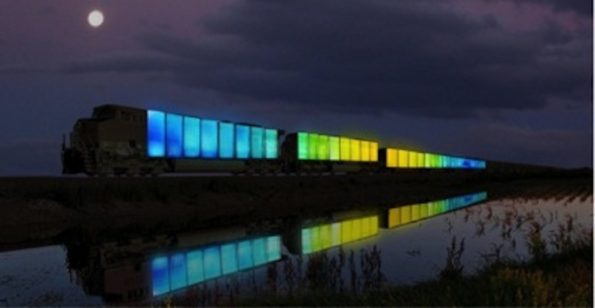Search
To search for an exact match, type the word or phrase you want in quotation marks.
A*DESK has been offering since 2002 contents about criticism and contemporary art. A*DESK has become consolidated thanks to all those who have believed in the project, all those who have followed us, debating, participating and collaborating. Many people have collaborated with A*DESK, and continue to do so. Their efforts, knowledge and belief in the project are what make it grow internationally. At A*DESK we have also generated work for over one hundred professionals in culture, from small collaborations with reviews and classes, to more prolonged and intense collaborations.
At A*DESK we believe in the need for free and universal access to culture and knowledge. We want to carry on being independent, remaining open to more ideas and opinions. If you believe in A*DESK, we need your backing to be able to continue. You can now participate in the project by supporting it. You can choose how much you want to contribute to the project.
You can decide how much you want to bring to the project.

At 18:30 on 6 September, at the Riverfront Studios in Brooklyn, New York, the first of various happenings that form part of a nomadic public art project began. Organised by the artist Doug Aitken, Station to Station moves by train and will make nine stops: New York, Pittsburgh, Chicago, Minneapolis/St.Paul, Santa Fe, Winslow, Barstow, Los Angeles and San Francisco. Its mission is to bring artistic experimentation to the public. Designed as a moveable light sculpture on the outside and as a cultural studio on the inside, the train transports what’s needed to create different happenings at each stop, through a variety of artistic and cultural expressions –installations, performances, sculptures, prints and audio-visuals, music, literature, film and food -. These interventions will happen on just one night, in a specific place, in each city. The list of those who have joined this project is long and distinguished. Their common trait: creative pioneers or non-traditional artists, as Aitken categorises them, with an interest in bringing people closer to a wide range of media for creation, that break with traditional concepts of art and culture.
I like Station to Station. I like it because it goes directly to the people without the frivolous attitudes and sterile spaces that obstruct dialogue and exchange. I like it because institutional bureaucracy doesn’t dictate the type of relations that have to exist between the artists nor between the artists and their public. In this project diversity, what’s current and what’s historic coexist. It’s not pretentious, though it is ambitious. It doesn’t impose so much as it invites participation. I like it because it’s not just a load of blah-blah-blah from which one only extracts empty words. And above all I like it because it doesn’t fall into the temptation of a thirst for fame that degrades desire in a call for satisfaction, petrifying the soul of art: just involvement and criticality.
But the most attractive thing about this project is the way that it has been organised. It’s being financed entirely by the brand Levi’s, whose founder Levi Strauss, originally from Bavaria, travelled from New York to San Francisco in 1853 to open a branch of the family company “J. Strauss Brother & Co.”, that later became the Levi’s empire (headquarters of the invention of blue jeans-. Mr Strauss didn’t just dedicate himself to creating a brand that has dressed millions of workers for over a 100 years in the United States, but also formed part of the cultural scene of San Francisco supporting different communities in their search for more worthy forms of living. Following this tradition, the brand (that already has two foundations) decided to create in 2010 the campaign GoForth, the aim of which is to support initiatives dedicated to creating real social change. Station to Station joins this as a project that aspires to erase the ideological frontiers that exist in relation to artistic and cultural productions in the United States. It is for this that, despite being sponsored, none of the events will have free entry. The cost of each entrance ticket -$25 per person- will go to the Station to Station Cultural Fund that will take charge of organising non-traditional projects in the seven museums in the United State with which an agreement has been reached – MoMA PS1, Carnegie Museum of Art, the Museum of Contemporary Art Chicago, Walker Art Center, SITE Santa Fe, Los Angeles County Museum of Art (LACMA), and San Francisco Museum of Modern Art (SFMOMA)-.
We could say that a very creative collaborative effort has been orchestrated here, one that could function as an alternative model for organising valid rather than blockbuster programmes in the face of institutional deficits. It’s an interesting tripod. Unconventional events directed at the public, funds for new non-traditional projects and an opportunity for seven museums to design culturally pioneering programmes. All that’s left is to follow their lead.

Paulina, from Guatemala, has abandoned the four walls of her consultancy and likes to think also the bad habit of distancing oneself from life, on the never-ending carousel of concepts and theories. But she didn’t leave with her hands empty, in her pocket she carries the desire to rescue the value of the unique, heritage of her training in psychoanalysis. She hopes to do something with this. She hopes to be able to engage with the unforeseen aspects of reality. To document them and let them be seen with a twist of imagination. With luck they will stop going unnoticed and perturb like that strand of hair in the soup.
"A desk is a dangerous place from which to watch the world" (John Le Carré)